A new campaign results page is available! Discover its features
The graph allows you to visualize data evolution over time.
The X-axis displays the time scale, the y-axis the value of the data.
To get a comparative view, open the Graphs tab at the top of the graph area.
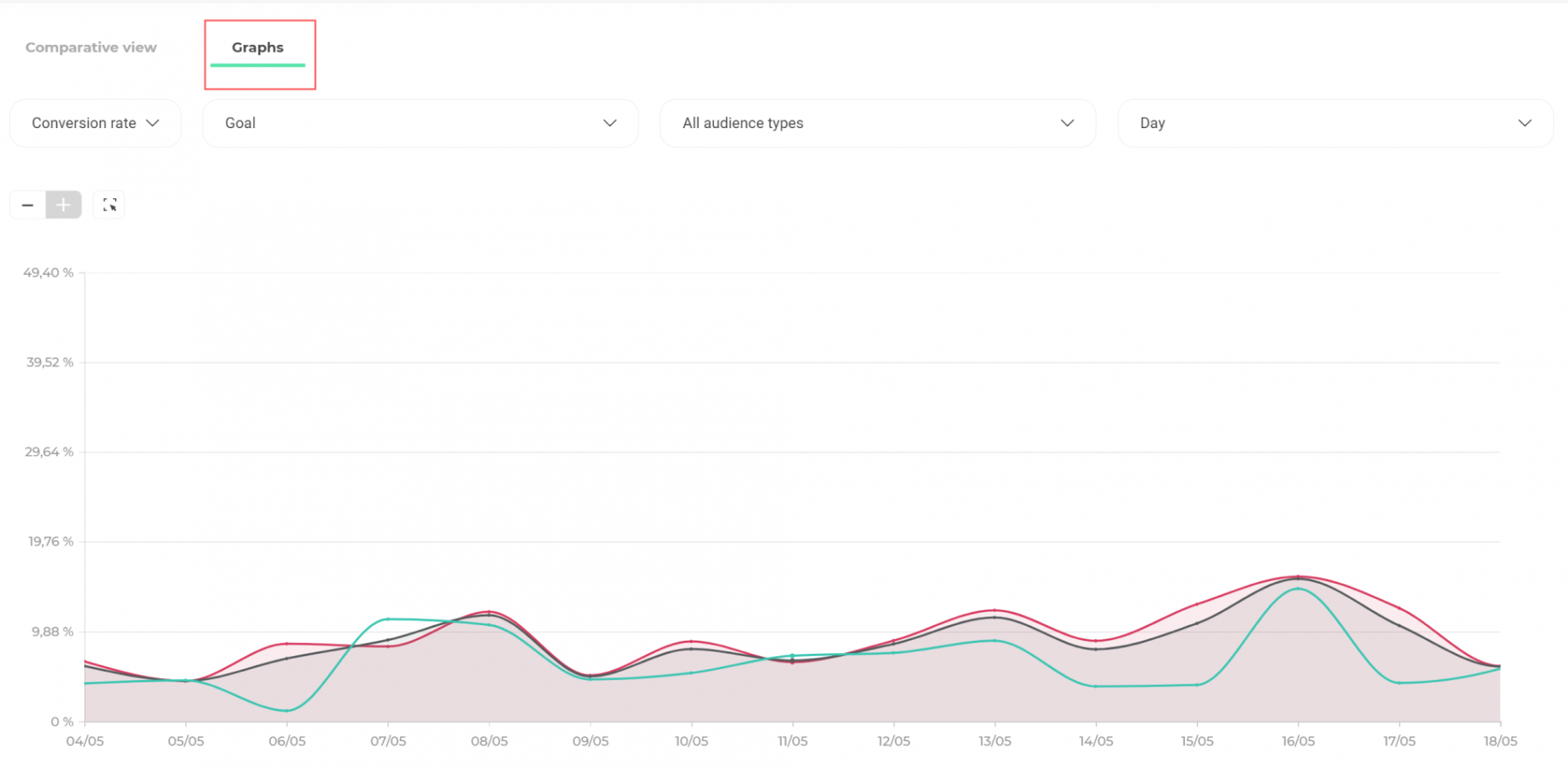
View per goal and view per type of audience
The display of the graph differs depending on whether you have chosen the view by type of audience or by goal in the Actions menu of the results page. To learn how to choose between the two types of views, see our article dedicated to actions on the results page.
If you have set the view by goal (default view), the graph will represent a goal and each curve shows the evolution of data regarding a type of audience over time for this goal.
On the contrary, with the view by type of audience, the graph will represent a type of audience and each curve, for this type of audience, the evolution over time of data regarding the goal.
In this article, we will take the example of a view by goal graph (default view).
Graph configuration
It takes 4 steps to configure the graph display:
- Choice of the data to display;
- Name of the goal / type of audience to display;
- Choice of goals / type of audience to display;
- The fineness of grouping data.

Choose data to display
The graph can display different types of data:
- Conversion rate;
- Number of visits / visitors;
- Number of conversions;
- Improvement rate;
- Reliability rate.
By default, data displayed on the graph is the conversion rate.
To select another type of data, click on the first drop-down menu to display the different types of available data.

Just click on the type of data you want to display in the graph to select it.
Choose goal to display
In the second drop-down menu, select the goal for which you want to view the results. The curves of the displayed types of audience will show the results on this goal.

Note: If you have chosen a view by type of audience, this drop-down menu offers to select the variation to display.
Like everywhere else on the results page, the main goal is identifiable by the little black star next to it.
Choose types of audience to display
In the third drop-down menu, select the types of audience to display in the graph.
Click on a type of audience to select or deselect it. Two buttons also allow you to select or unselect everything.
A selected type of audience is marked by a full colored circle, a deselected one by an empty colored circle and a disabled one is grayed out and displayed at the end of the list.
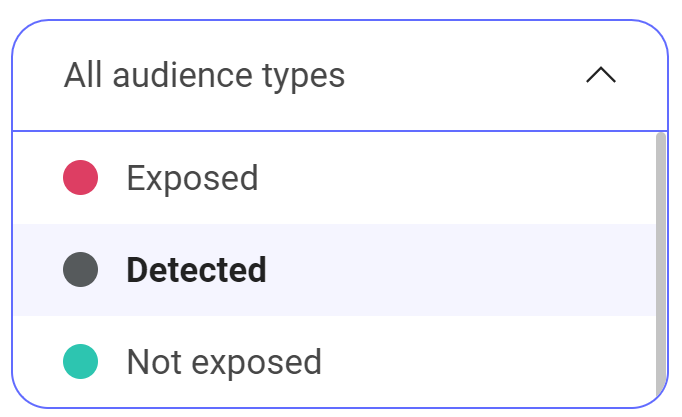
To better understand the different types of audience, you can read this article.
Different options for grouping data are available in order to adapt the display of your results to your experiment duration or the date range you set.
You can group data by:
- Months;
- Weeks;
- Days;
- Hours.
By selecting Month from the drop-down menu, the X axis on the graph is graduated by month, each month being represented by a point grouping all data measured over the month. The same goes for Weeks, Days and Hours.
You can choose the most relevant display for your experiment. If, for example, your experiment runs over a period of 2 months, it is better to choose a grouping by weeks. A display per month would not give sufficient details (only 2 points) and a grouping by days would show too much data.
If you are interested in a range of dates that runs 2 weeks, a grouping per day is recommended.
Read the graph
The evolution curve presents data evolution over time.
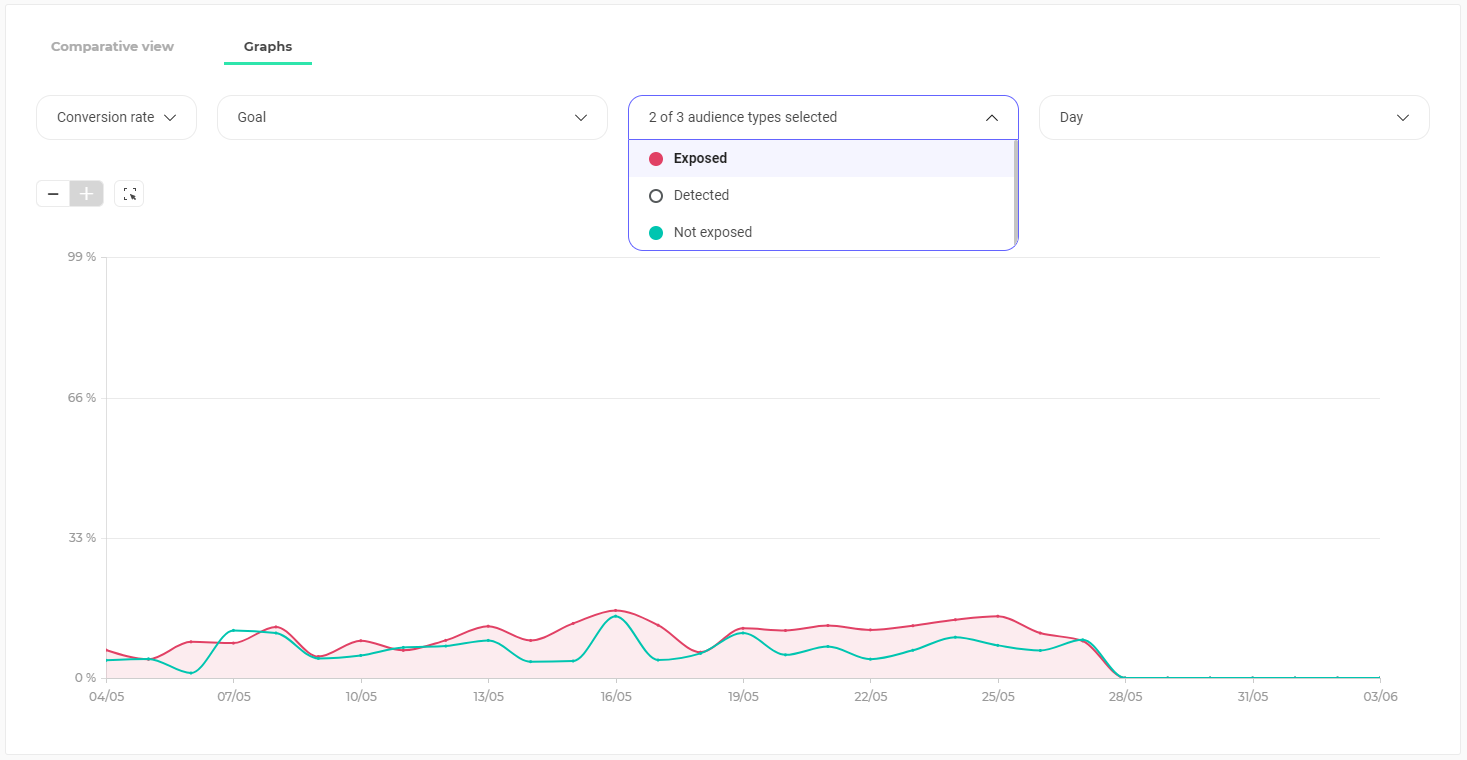
The graph above represents the conversion rate’s (Y-axis) evolution over time (X-axis). Each curve represents one of the 3 types of audience and the results are those related to Goal 1. The time scale is graduated by day.
View details of a point on the graph
On hover, the detail of the results appears.
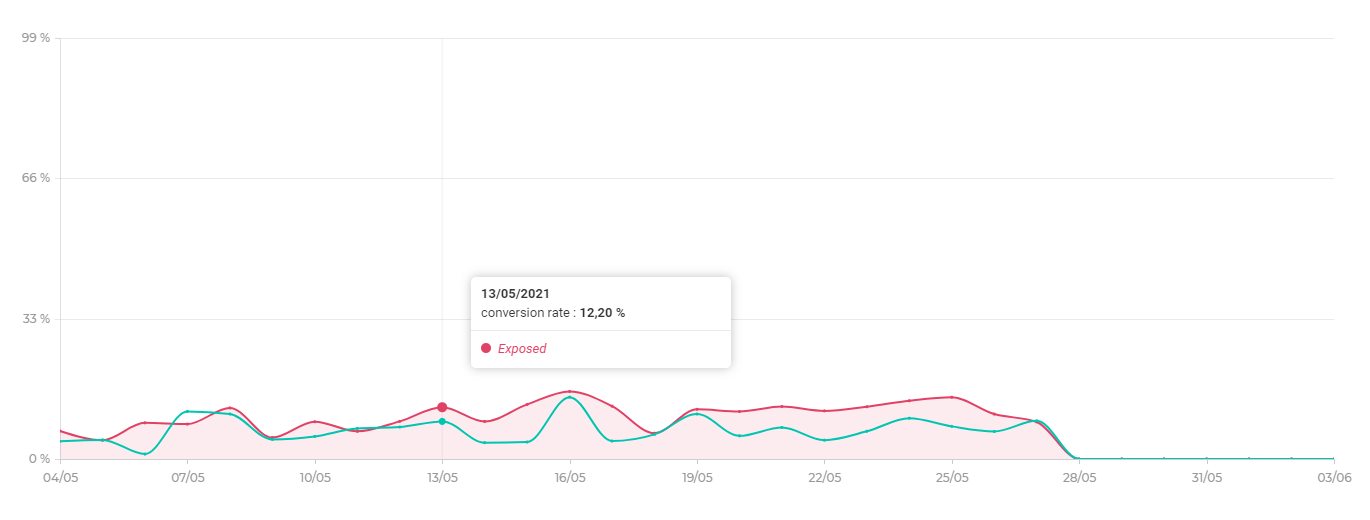
A tooltip displays:
- The corresponding date on the X-axis;
- The value of the corresponding data on the Y-axis;
- The name of the hovered type of audience.
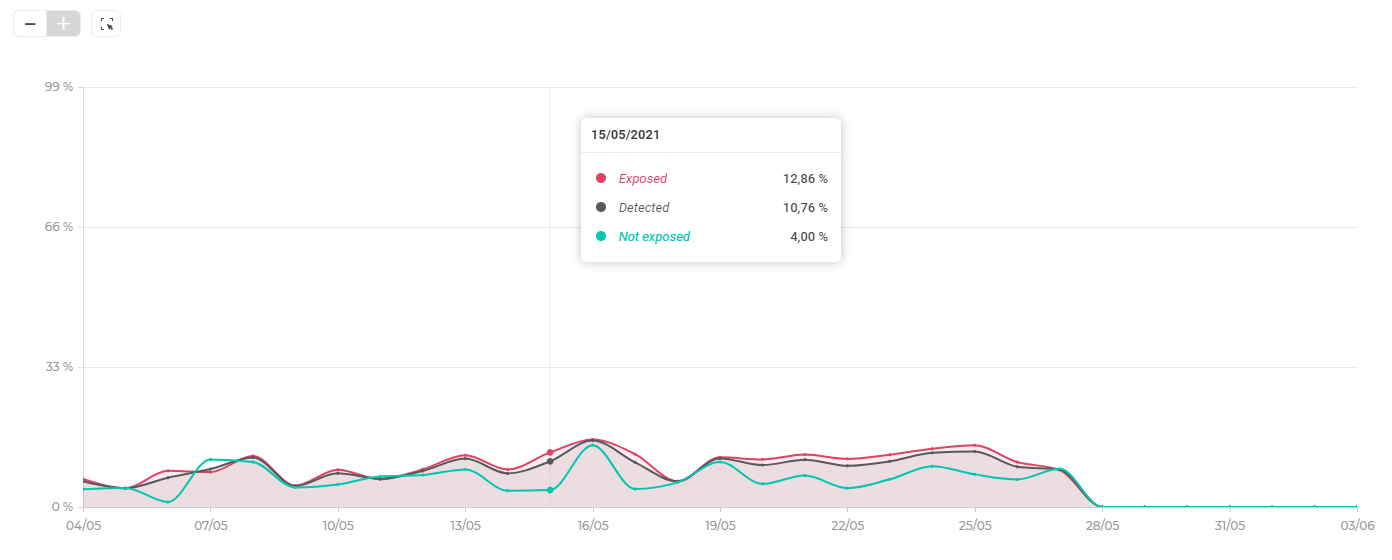
By clicking on this point, the tooltip displays the value of the data for each type of audience on that date.
Click elsewhere on the page to close the tooltip.
Use the zoom
Above the graph, on the left, three tools are available :
- A zoom out tool ;
- A zoom in tool ;
- A free zoom tool.
Zoom (+) and zoom out (-) tools
Click the + or – button to zoom in or out on the graph. The – reduces the scale of the ordinate axis (data value) and the zoom + enlarges it. The use of zoom has no impact on the X-axis. The displayed date range and scale remain unchanged.
When + and – zooms are at their maximum, the buttons are dimmed and can not be used anymore.
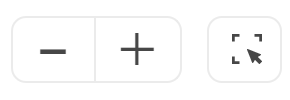
Free zoom tool
The free zoom tool allows you to freely zoom in on the graphic area of your choice.

To use it, first click on the Free zoom icon :
The graph area gets grey :
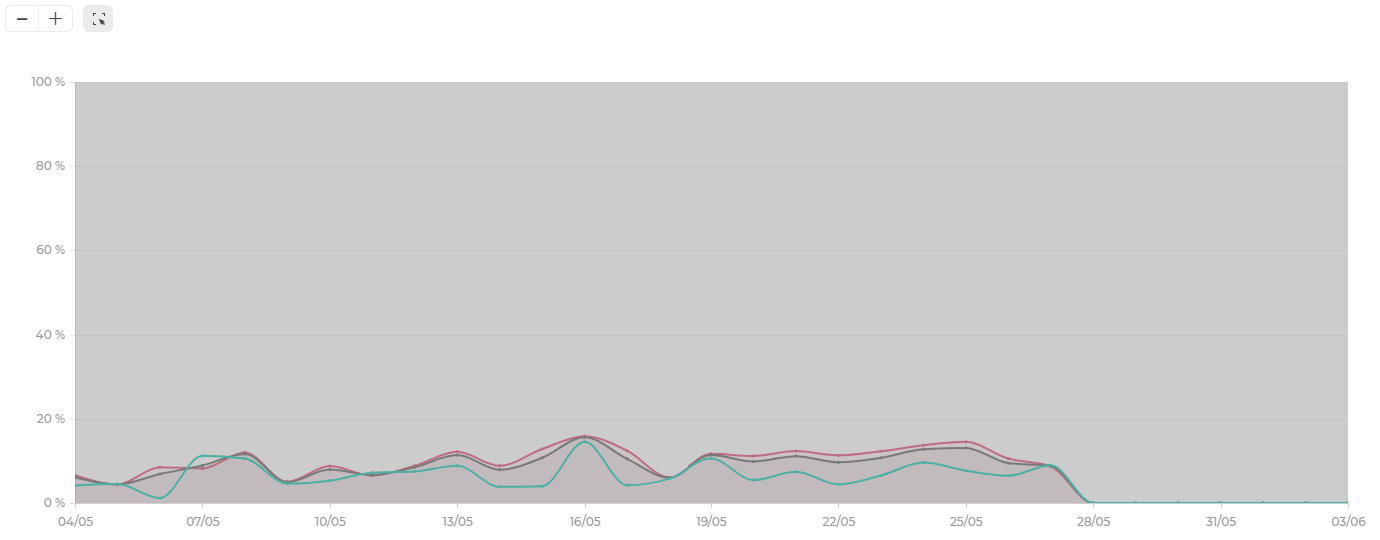
To define the area you want to zoom in on, click in the grayed area and while holding your click, drag diagonally to define a rectangle of the area you want to zoom in on.
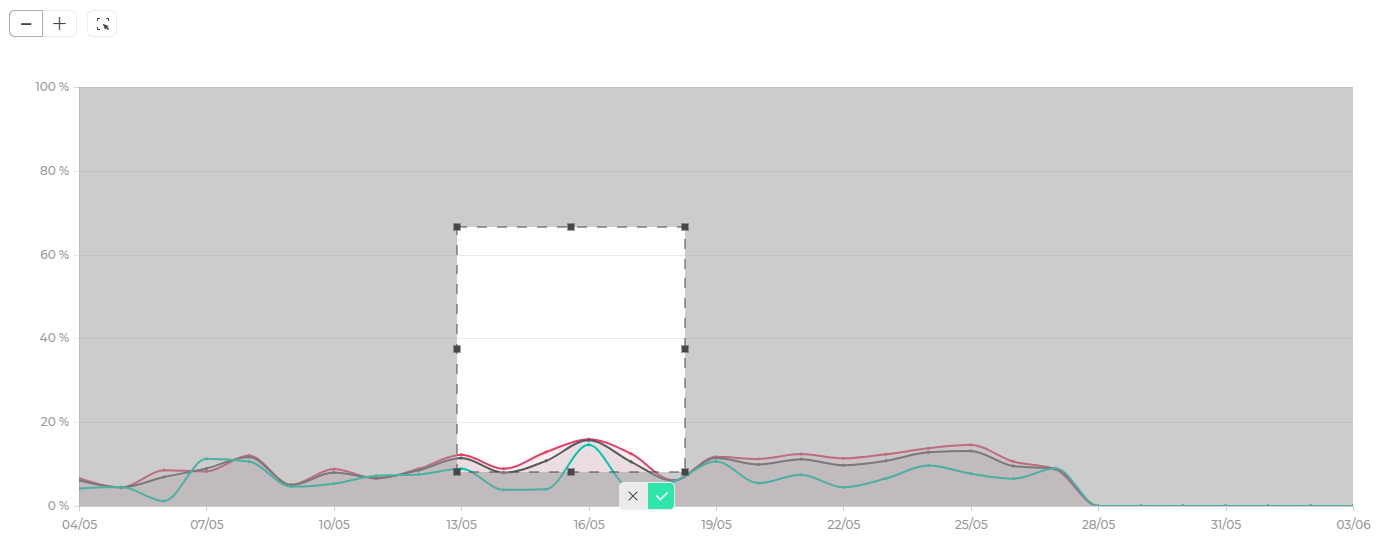
The zoom area thus defined is highlighted. When the area reaches the right size, release the click. Two buttons appear at the bottom right of the rectangle.
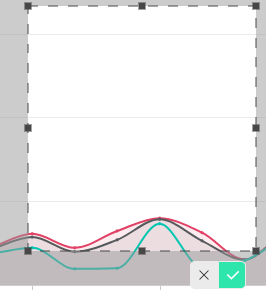
Click on the validation button to confirm your selection and refresh the graph according to this one or click on the cross to cancel your selection and exit the free zoom mode.
By validating your selection, the graph view adapts. The selected area stretches to fill the entire chart area.
To exit the free zoom mode and return to the default view, click the free zoom button again.
